By: Matthew Piazza
Published: July 12, 2024 | Updated: August 05, 2024
Read time: 11 minutes
Introduction
Figuring out what to eat next is one of life’s eternal struggles. Do you dine out? Do you go to the grocery store for ingredients and eat in? Can you compromise and grab a pre-made meal from a grocery hot bar instead?
Fortunately for the consumer, who has shown tremendous resilience these past several years through the pandemic and resulting inflation, carefully prioritizing resources and balancing household budgets, they are becoming more empowered and understand their value to brands. With this change, the onus to deliver on that value is squarely on the grocery industry.
In response, grocers are trying to stay a step ahead of shifting consumer habits that are changing not only when and how they buy, but also what they buy. More shoppers are making their purchases online frequently and purchasing smaller baskets. Items that once were staple purchases are now deemed non-essential or too expensive.
Staying agile with new strategies for keeping the empowered consumer happy while growing their value to the grocery store is top of mind for the industry.
Here are the current top grocery trends:
- Grocers look to crack the equation for value-conscious consumers
- Growing e-commerce can be bolstered by personalization on all channels
- Convenience needs to be streamlined, frictionless and consistent
Value
Grocers look to crack the equation for value-conscious consumers
Consumers seek value and this statement is truer now than ever. Purchases show that they are looking not only for the best product, but the best price as well. Grocers are looking to understand consumer sentiment in relation to spending and while food inflation and grocery prices are expected to cool down, economic pressures remain top of mind for many shoppers globally, so the value equation is a hot topic.
Pricing
Pricing is the most obvious aspect of value and grocers are approaching their pricing strategies from multiple angles.
Offline, with some empowered consumers shifting their spending habits to look for better deals, discount stores are gaining traction. By offering items that are lower than their supposed “full price,” consumers are attracted to the savings they’re making. Discounters continue to grow, taking share away from retailers, even though retailers may have more offerings.
Promotions are another direct tactic. Grocers are trying multiple mechanisms and are targeting audiences to improve the perceived price and protect their most valuable customers — like loyalty program members. Promos are hard to do well, but some brands are testing different methods and by rolling out the most successful ones in a targeted fashion, consumer savings can also lead to a better bottom line.
Others are trying a strategy where the best prices are exclusive only to those who join their membership program. The instantaneous savings can be appealing, but this approach has yet to gain footing industry-wide. Nonetheless, the idea of reduced prices is still being tested and seeing success in other ways. Via the online channel, some grocers — and brands that have grocery arms — have started looking into subscription programs.
With subscription programs, users may see small savings per trip, but it’s the cumulation of saved dollars and extra perks that make it worth it in the end for the value-seeking shopper. For example, Australian grocer Woolworths has its Everyday Extra program. For a monthly or annual price, members get an extra, larger discount on one shopping trip a month, more points and perks like free high-quality products. By further linking it to the free rewards account, their shoppers enjoy a smooth transition while building loyalty.
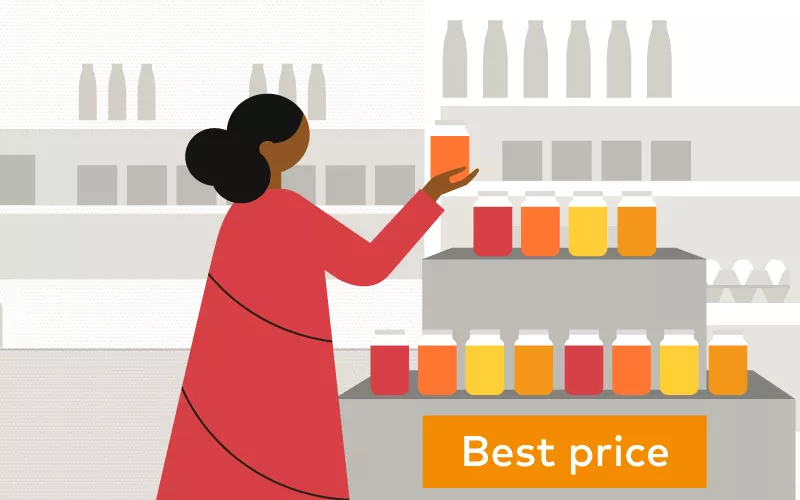
Private label growth
Hitting record success in 2023, grocers are offering more private label options. Combine the value-seeking customer — who is now less likely to make an impulse purchase — with the prospect of higher margins and reduced supply chain risk, and private labels are an appealing option for many brands.
In an industry pressed for margins, more and more name brands are reacting to the macroeconomic environment and raising their prices, which are then passed on to the stores. With private labels, there is a high profitability potential, an opportunity to push into multiple categories and more control. Grocers can save money by keeping the process in-house and communicating with more transparency, sharing what’s inside and where it’s made, and appealing to consumers who are already fans of their brand.
Omnichannel and personalization
Growing e-commerce can be bolstered by personalization on all channels
Omnichannel
Whether it’s digital or in-person, the consumer relies on the brand to have the items they want while expecting a consistent and smooth customer experience. An omnichannel approach naturally feeds into the growth of e-commerce while simultaneously elevating the in-person experience.
The most direct path grocers are pursuing is combining “bricks and clicks” — i.e., in-store and online. Because most grocery shopping is still conducted in person, grocers are finding ways to engage shoppers with tools like digital coupons and mobile app-integrated rapid pickup options.
In one ideal scenario, the consumer first makes their order online as a part of their everyday routine. While looking, they see relevant discounts that solidify their choices. Later, via mobile app or SMS, they notify the store they’re coming and within minutes of arrival, an employee delivers the items. This experience combines multiple channels, is slick, painless and saves the consumer money on delivery fees.
Of course, not every journey is the same, but with a greater emphasis on unified commerce, grocers are empowering their customers across all touchpoints. Whether it’s the use of AI chatbots to address concerns and questions or the diversification of the back-end operations to use a warehouse fulfillment model, the strategy is to appeal to customers seeking value and support the drive of wallet share to the brand.
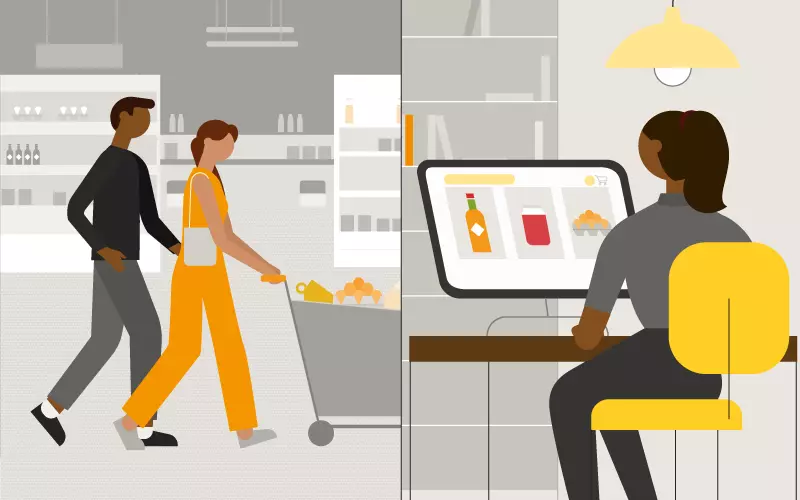
Personalization
It’s obvious why grocery stores are looking into an omnichannel approach, but not all grocers have been able to fully capitalize on the potential of digital channels like web, mobile app and email. An experience where a consumer can simply purchase groceries online does the job, but top brands are taking it to another level.
Most grocery customers expect a tailored digital shopping experience and are frustrated when they don’t get it. The consumers who receive personalized, exclusive content born from consumer-consented data, like discount offers on items purchased previously, suggestions for complimentary items already in the cart or recommended products in line with an individual’s stated dietary requirements, can feel more catered to. This can lead not only to immediate increases in cart value, but also subsequent business benefits like return purchases that ultimately lead to long-term customer loyalty.
Advanced personalization technologies make it possible for grocery teams to deliver the sophisticated experiences outlined above, adjusting each to the individual shopper, channel or even site-specific nuances, such as sales events, seasonal or promotional products, preferred localized stock, and more.
To bring these benefits to life, however, grocers must make necessary internal investments to set their personalization programs up for long-term success. According to Dynamic Yield by Mastercard research, while 80% of grocers stated that personalization is a clear, visible priority for their company, nearly a quarter of respondents admit they still need to orchestrate a proper program or quantify their impact.
With e-commerce sales only predicted to keep growing, personalization represents the next frontier of online grocery shopping. As retailers look to ensure that they deliver consistent high-level experiences in-store and online that emphasize the best of each shopping channel, they must also invest in a unified long-term vision, execution and optimization strategy across the entire organization. Without it, personalization remains a one-off tactic, not the competitive differentiator it should be.
Retail media networks
As expected by many, retail media networks (RMNs) are seeing a quickly expanding role as grocers look to launch networks — some even on their own — and connect with both their shoppers and potential brand partners. In fact, as a strong combination of omnichannel and personalization, it’s practically a must in today’s grocery landscape.
RMNs bring many benefits. For partnering brands, their messages can be shown to shoppers however they choose, ads can be quickly personalized to increase effectiveness and they can leverage already existing consumer relationships with the grocer.
For the grocers, any digital space they own can be turned into an advertising space, the data collected can be used to form valuable insights for future initiatives and most importantly, a more meaningful connection can be formed with the consumer. With RMNs, rather than relying on third-party data, grocers gain insights from their consumers and that first-party data enables greater personalization. Further, RMNs are funded by suppliers, which creates an additional revenue stream for the grocers, so the appeal is understandably strong.
A clear shift from traditional ways, while RMNs are a relatively newer concept in the industry, don’t expect them to go away any time soon. According to a Forrester report commissioned by Mastercard, over 74% believe RMNs help improve the customer experience, deepen brand relationships and grow revenue and 64% plan to partner with an organization that can help them gather, test and measure current and potential RMN investments.
RMNs open the door to forming new partnerships and ultimately expand their brand reach while monetizing high-margin aspects of their business. As grocers further their strategy, expect RMNs to be in the conversation.
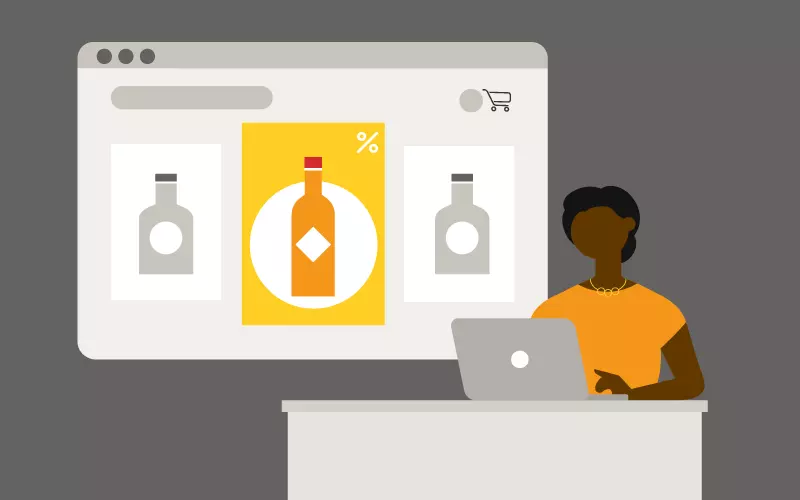
Sustainability
Sustainability has always been a topic that has had clear ties to groceries. While not a new trend in the grocery industry, no one has yet been able to put a finger exactly on what it means for consumers.
It is an evolving space and, based on global trends, there looks to be a continued focus on the empathetic and values-oriented shopper. Consumers are not only looking for products for their own health, they are also looking at products that are good people and the planet. As they work on finding the balance between price-value and their own priorities, more and more brands are looking to take actionable steps to improve meaningful sustainability efforts, including obtaining designations like "fair trade certified” and providing additional options that certify the “greater good” notion.
Some grocers are taking action around the removal of plastics and mitigating food waste. Kroger, for example, is doing both. They are one of the few establishments that have made a public commitment to not only eliminate single-use plastic grocery bags, but also prioritize tracking food waste and prevention by 2025 . Meanwhile, others are furnishing their green credentials with renewable energy initiatives, donating out-of-date items to food banks and even rethinking their displays to better educate and empower consumers with product information.
No matter the method, when done properly, grocers are making meaningful strides to enhance consumer experiences by reducing environmental impact, ultimately creating value through loyalty. Examples like this further open the opportunity to not only be clear in their messaging to consumers, but also to personalize their message to the consumers that care. After all, those who are likely to be interested in sustainability are more likely to make their voices heard through their spending habits.
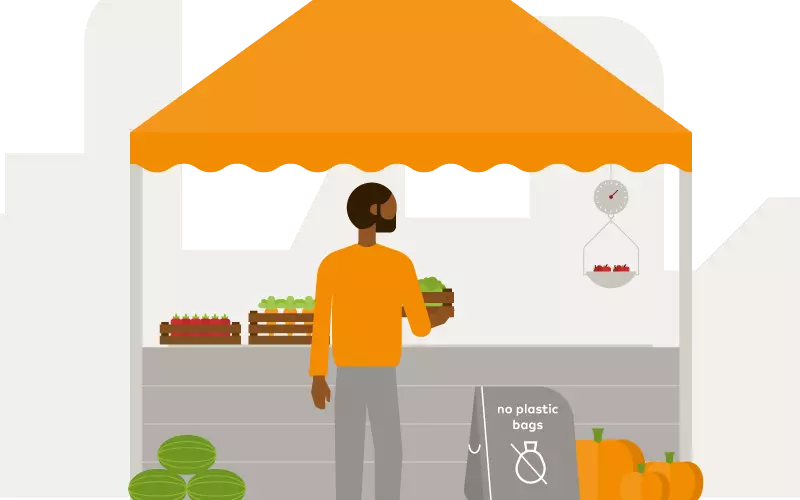
Convenient experience
Convenience needs to be streamlined, seamless and consistent
The Jetsons-style grocery store where robots would grab items and shoppers would zoom around on conveyor belts may still be futuristic, but the grocery shopping experience has undoubtedly become more convenient.
Grocers are looking to generate reasons for people to choose them, so they are approaching convenience in many ways:
- Information: For consumers who want an experience around transparency, stores present products from around the globe that are accompanied by readily available information on where it’s from and its nutritional facts.
- Speed: Self-checkout is an option that is seeing increased rollout around the globe. These allow customers to move at their own pace and make the process more frictionless.
- Availability: Some consumers find a brand and stick to it. For that, grocers are ensuring their key brands are in stock and available at a moment’s notice.
- Delivery: Delivery channels are growing beyond the traditional in-store approach. With rapid growth since the pandemic, more delivery partnerships are being formed and services like click-and-collect and direct delivery are being offered globally. From benefits like the cheap cost in Latin America to the quicker fulfillment time frames seen in Europe and Asia, delivery is also a good way to tap into the younger market who are becoming accustomed to this level of convenience.
- Offerings: More and more grocery stores are adding quick-eat offerings like hot food bars and prepackaged foods to win back consumers from dining out. As prices have grown at quick-service restaurants, this is also an opportunity for grocers to promote value and continue to expand their brand and revenue streams.
- Format: Alternate formats are on the rise externally and internally. Multi-format stores are being formed to cater to multiple segments and needs with some grocers looking into opening their own convenience stores. These smaller formats appeal to consumers that are on the go while also increasing the store’s market reach. Meanwhile, other stores are setting up and attaching their own fulfillment centers. Not only does it help grocers become more agile with their assortment and stock, but it ultimately saves them from paying for extra real estate.
With a convenient experience, grocers cultivate loyalty, leading to more opportunities to increase customer lifetime value. A loyalty program that provides benefits and discounts only to its members incentivizes shoppers to join. They experience perks and savings they didn’t initially receive, and in turn, are willing to come back, creating a feedback loop.
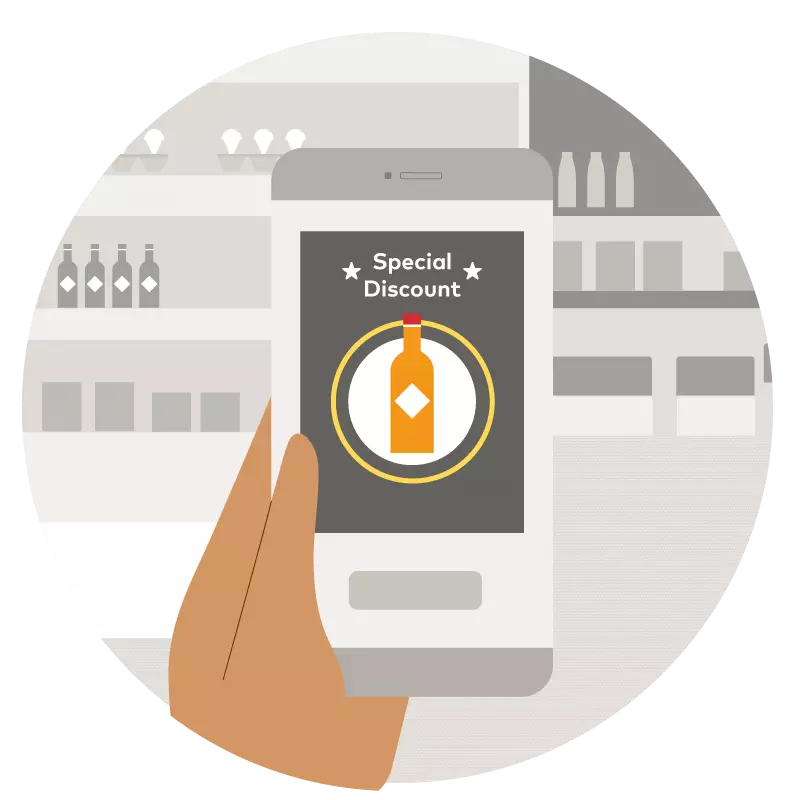
For example, Amazon recently started a grocery subscription program where Prime members pay a “low-cost” fee for free deliveries over a certain amount. It covers rapid delivery and pickup windows while also granting priority access to recurring time slots for weekly grocery orders. With this program, they not only increase their grocery reach, but they build on their convenient online presence and grow their Prime membership.
Other brands are expanding beyond just grocery products. By having programs that tie grocery purchases to offers outside the industry (like health and beauty) and vice versa, grocers are allowed to understand their consumers better, forming networks and loyalty coalitions with other brands, while consumers enjoy great value, convenience and, ultimately, a great experience that brings them back for more. Examples like this are win-win for all parties.
Conclusion
The grocery segment is undergoing dramatic change. In an increasingly connected world, grocers are adapting to consumers who expect to get what they want with the click of a button. Whether through personalization across multiple channels, a more desirable experience with greater convenience and value or welcomed transparency about sustainability initiatives, grocers will continue to innovate. The ones that rise to the top will deliver world-class shopping experiences, both in-store and online, while ensuring their prices and assortment deliver value for a broad range of customers.
To learn about how Mastercard helps grocers access the right data and analytics to inform better decision-making and design effective customer engagement strategies, reach out to your Mastercard representative or contact us here.











